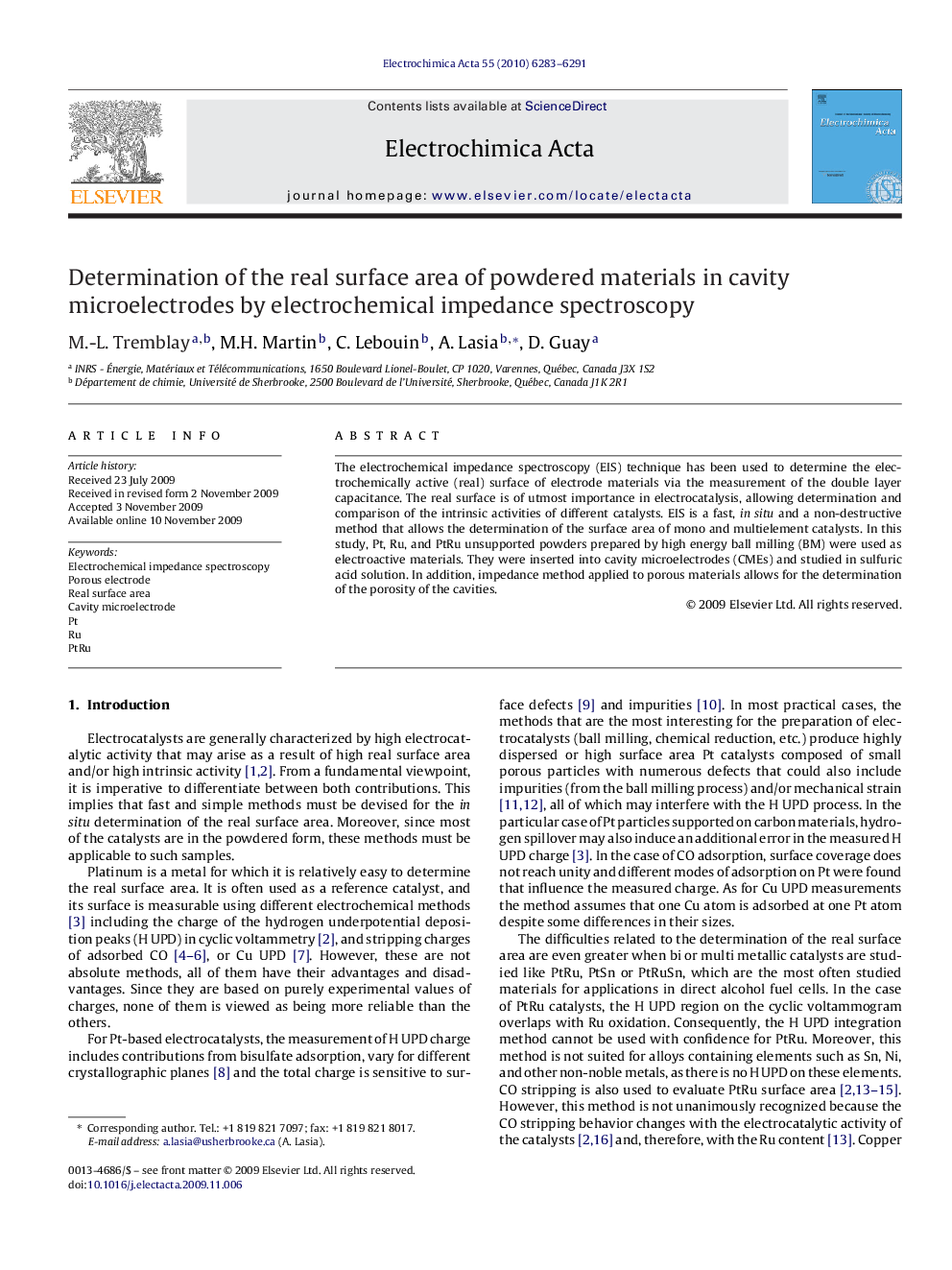| Article ID | Journal | Published Year | Pages | File Type |
|---|---|---|---|---|
| 190344 | Electrochimica Acta | 2010 | 9 Pages |
The electrochemical impedance spectroscopy (EIS) technique has been used to determine the electrochemically active (real) surface of electrode materials via the measurement of the double layer capacitance. The real surface is of utmost importance in electrocatalysis, allowing determination and comparison of the intrinsic activities of different catalysts. EIS is a fast, in situ and a non-destructive method that allows the determination of the surface area of mono and multielement catalysts. In this study, Pt, Ru, and PtRu unsupported powders prepared by high energy ball milling (BM) were used as electroactive materials. They were inserted into cavity microelectrodes (CMEs) and studied in sulfuric acid solution. In addition, impedance method applied to porous materials allows for the determination of the porosity of the cavities.
